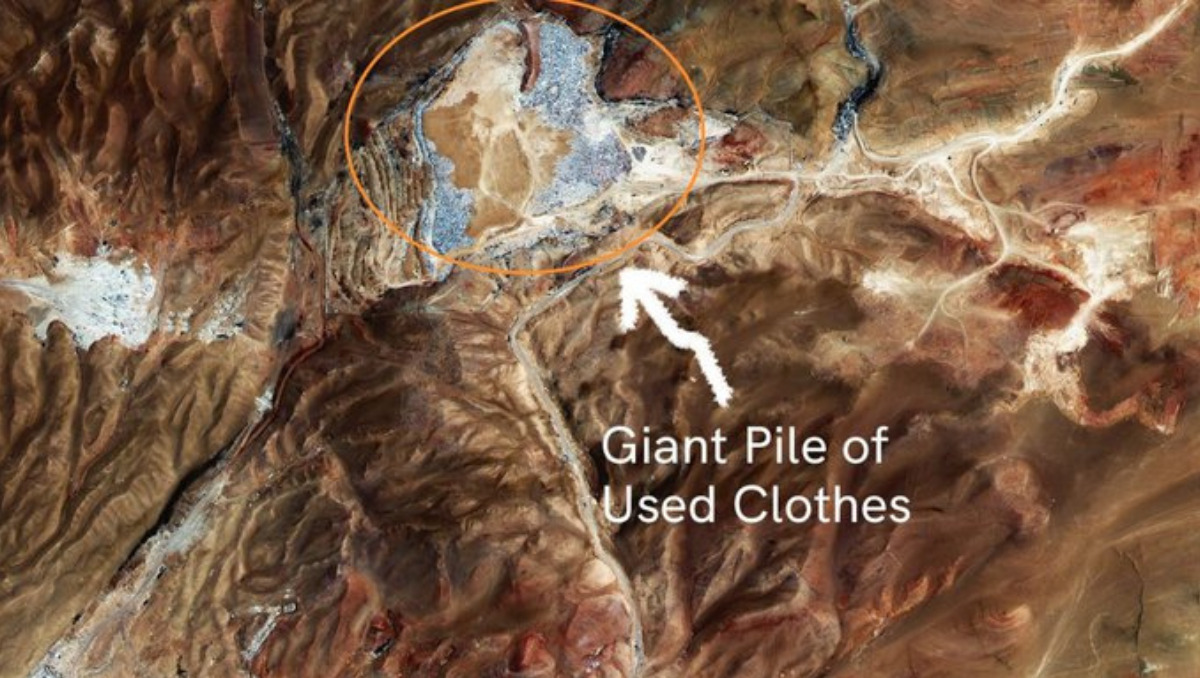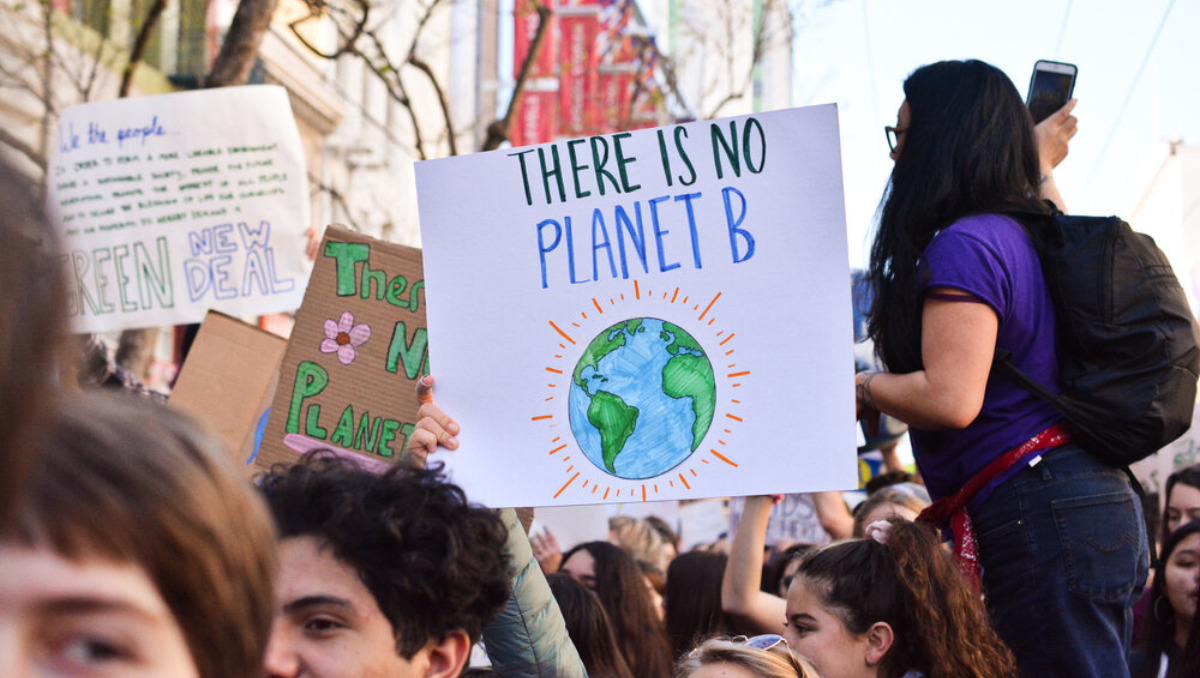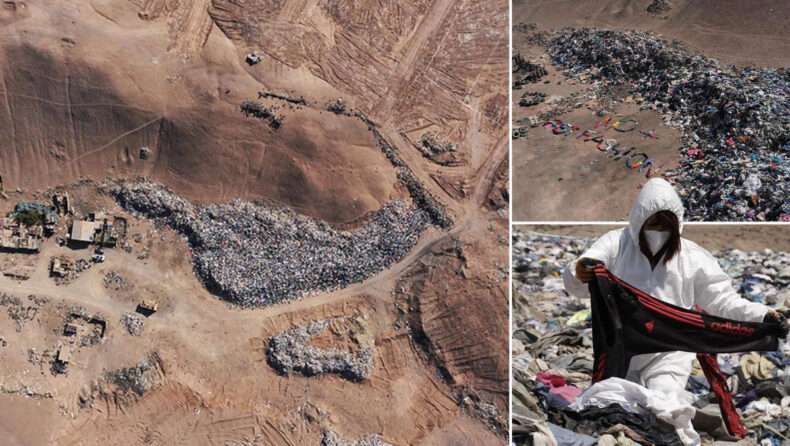Inevitable due to its size, a garment dump exists in Chile’s Atacama Desert. The United Nations states that one of the greatest polluters in the world is the fashion sector, notably fast fashion.
Mountains of branded garments and footwear can be found hidden behind sand dunes in the Chilean Atacama Desert. The amount of garments that are being thrown away and given up on is increasing so swiftly that the landfill is already visible from space.
Satellite imaging software SkyFi provided an orbital perspective of the Chilean waste. The Roundup, a US-based environmental awareness website, estimates that up to 100 billion new clothing are created each year and that textiles make up 92 million tonnes of global waste.
The Very High Resolution image with a resolution of 50 cm was captured using satellite photography and demonstrates how large the pile is in relation to the city at the bottom of the image.

An estimated 741 acres in Chile have been overtaken by abandoned garments. There are problems with health for the surrounding populace because it has been discovered that the textiles contaminate the land and neighboring water sources with hazardous substances.
When they aren’t sold, the mountain of unwanted or unused clothing that was produced in China or Bangladesh and distributed to retail outlets in the US, Europe, and Asia is brought to Chile.
According to Franklin Zepeda, the founder of EcoFibra, a company that aims to reuse the textiles by turning them into insulation panels, the clothing can’t be disposed of in municipal landfills since they aren’t biodegradable and frequently contain chemical chemicals.
The unsold clothing is located approximately a mile from some of the city’s less affluent neighborhoods, adjacent to Chile’s Iquique harbor. Sometimes, immigrants and local women visit the landfill to look for goods to wear or sell.
Environmental Concerns
The United Nations argues that one of the biggest polluters in the world is the fashion sector, specifically fast fashion. It generates 10% of the earth’s greenhouse gas emissions and nearly 20% of the waste water on the planet.
Another concerning fact is that, in addition to garment fabrics like nylon, polyester, and acrylic that contain synthetic fibers, over 60% of all clothing material is really made of plastic. Imagine it being unable to decompose for years in landfills.

Every year, some 59,000 tonnes of clothing come at the Iquique port in the northern Chilean free zone of Alto Hospicio.
Global garment production increased between 2000 and 2014, and the fashion industry is “responsible for 20% of total water waste on a global level,” according to a 2019 UN report.
Water consumption for one pair of jeans is 7,500 liters (2,000 gallons).
Manufacturing of garments and footwear is responsible for 8% of worldwide greenhouse gas emissions. Whether the piles of clothing are buried underground or left out in the open, each option pollutes the ecosystem by allowing toxins to enter underground waterways or the air.
We can make a change
Rosario Hevia, who founded Ecocitex, a firm that makes yarn from abandoned fabrics and worn-out apparel in 2019, claims that things are changing. Rosario Hevia first launched an outlet to recycle children’s clothing. Neither water nor chemicals are used in the procedure.
Paying attention to where you get your clothing is one of the best methods to make sure it does not cause environmental damage. Brands that practice ethical and environmentally friendly fashion pay attention to every stage of the supply chain, not only the materials used in the creation of their clothing. You are aware that the company uses natural colors, non-toxic ingredients, and biodegradable resources, and that garment workers are paid fairly.

Fast fashion shops want you to believe that you need to fill your wardrobe with the newest styles of clothing since fashion trends change every year. The trouble with this is that the clothes are typically made of low-quality materials that don’t last for long, forcing you to buy more frequently. Higher-quality products that will last much longer are worth the extra money.
Don’t throw away an old pair of pants when you outgrow them. Donate your clothes to charities that redistribute them to people in need to give them a second chance at life. Just make sure your clothing is clean and in good shape before you send it on its way.

Additionally, you can repurpose old clothing by buying used items, which is a great option if you enjoy vintage styles or high-end brands but don’t want to spend full price. Whether you used them to create scarves, t-shirt quilts, or stuffed animals, you were successful in extending the fabric’s lifespan.













